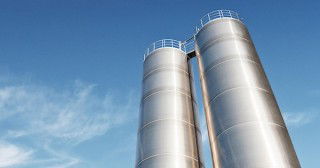The use of alternative fuels (AFs) has seen increasing demand being placed upon refractories. The Siam Refractory Industry Co Ltd has developed a third-generation refractory brick especially for the coating zone of the cement kiln where coating build-ups are unstable or coating areas shift. By Pannawit Ngaochai, The Siam Refractory Industry Co Ltd, Thailand.
In normal operating conditions with conventional fuel use, the refractory bricks in the coating zone or central burning zone of a cement kiln need to build up a suitable amount of “stable” coating to protect the lining against several factors, including:
• high thermal load: the refractory lining in the coating zone is exposed to the highest temperature from the main burner’s flame
• chemical corrosion: chemical corrosion occurs when the coated refractory bricks are directly exposed to the hostile chemical environment within the cement kiln, which includes alkalis and sulphur
• clinker infiltration: the occurrence of liquid phase whereby the chemical components within the silicate infiltrate the inner layers of the bricks and disrupts the bonding structure of the bricks
• abrasiveness from clinker balls
• reducing atmosphere
• thermal shock.
